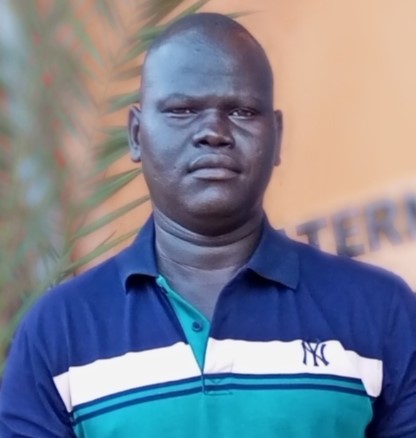By Benjamin Ajuong Machiek
In the aftermath of violent conflict, societies are often left fragmented, traumatized, and destabilized.
The cessation of hostilities, while a critical milestone, does not guarantee lasting peace. True peacebuilding requires a multi-faceted and sustained effort to address the root causes of conflict, rebuild institutions, and foster reconciliation among divided communities. In post-conflict societies, peacebuilding is not only a political or diplomatic exercise; it is also a deeply social, economic, and psychological process aimed at creating conditions for long-term stability, justice, and coexistence.
Understanding Peacebuilding
Peacebuilding refers to the broad range of initiatives and strategies designed to prevent the recurrence of violence and to lay the foundation for sustainable peace. This includes reforming political institutions, promoting economic development, ensuring social justice, addressing human rights violations, and fostering inclusive governance. Peacebuilding efforts can be led by national governments, international organizations, non-governmental organizations (NGOs), community groups, and, most importantly, the local populations affected by conflict.
It is important to distinguish peacebuilding from peacekeeping and peacemaking. While peacekeeping generally involves the deployment of international military and police forces to maintain ceasefires and protect civilians, and peacemaking refers to diplomatic efforts to reach negotiated settlements, peacebuilding focuses on the long-term process of healing and reconstruction after an agreement is reached or violence subsides.
Key Elements of Peacebuilding
Effective peacebuilding in post-conflict societies includes several interdependent components:
- Political and Institutional Reform
A stable and inclusive political framework is essential for lasting peace. This often involves constitutional reform, the establishment of democratic institutions, judicial independence, and the protection of minority rights. Electoral systems must be fair and credible, and mechanisms must be developed to ensure political participation for all segments of society. - Security Sector Reform (SSR)
Rebuilding security forces—military, police, and intelligence—is critical in a post-conflict environment. These forces must be restructured to be accountable, professional, and representative of the population. Disarmament, demobilization, and reintegration - (DDR) of former combatants is a vital component of SSR, helping prevent the resurgence of violence and facilitating the transition to civilian life.
- Transitional Justice and Reconciliation
Post-conflict societies often grapple with deep wounds caused by atrocities, war crimes, and human rights violations. Transitional justice mechanisms such as truth commissions, war crimes tribunals, and reparations are important tools for addressing past injustices and promoting healing. Reconciliation processes, which encourage dialogue and mutual understanding, are also crucial to rebuilding trust among divided communities. - Economic Recovery and Development
Economic stability is a pillar of peacebuilding. War often devastates infrastructure and disrupts livelihoods. Post-conflict recovery must prioritize job creation, investment in public services, and equitable distribution of resources. Addressing economic inequality and exclusion is essential to reducing grievances that could fuel renewed conflict. - Social Cohesion and Community Engagement
Grassroots initiatives play a key role in peacebuilding. Community-based programs that promote interethnic cooperation, youth engagement, women’s empowerment, and education can foster resilience and social cohesion. Empowering local actors and respecting cultural contexts strengthens the legitimacy and effectiveness of peacebuilding efforts.
Challenges to Peacebuilding
Peacebuilding is inherently complex and faces numerous challenges:
- Fragile Institutions: Post-conflict governments often lack the capacity or legitimacy to implement reforms, leading to weak rule of law and corruption.
- Continued Violence: Even after formal peace agreements, violence may persist in the form of criminal activity, intercommunal clashes, or insurgencies.
- International Dependency: Overreliance on international aid and actors can undermine local ownership and sustainability of peace efforts.
- Exclusion of Key Groups: Peace processes that marginalize women, youth, or minority groups risk entrenching grievances and sowing the seeds for future conflict.
- Psychosocial Trauma: The mental health impacts of war are long-lasting. Addressing trauma and promoting psychosocial healing are often overlooked but essential aspects of rebuilding societies.
Pathways Forward
To enhance the effectiveness of peacebuilding in post-conflict societies, several guiding principles should be followed:
- Local Ownership: Sustainable peace is rooted in local leadership and participation. Peacebuilding strategies must be locally driven and culturally relevant.
- Inclusive Processes: Inclusivity in political, social, and economic spheres ensures that all voices are heard and represented in post-conflict reconstruction.
- Long-Term Commitment: Peacebuilding requires patience and sustained engagement. Short-term interventions rarely address the deep structural issues underlying conflict.
- Integrated Approaches: Coordinating political, economic, social, and security initiatives maximizes impact and prevents gaps or duplication in efforts.
- Monitoring and Adaptability: Regular assessment and the flexibility to adapt to changing circumstances help maintain momentum and relevance in peacebuilding efforts.
Peacebuilding in post-conflict societies is a profound and ongoing endeavor that demands collective action, strategic planning, and deep empathy. It goes beyond the end of war to the cultivation of peace—built on justice, inclusivity, and resilience. While the challenges are formidable, successful peacebuilding transforms trauma into hope, division into unity, and fragility into strength. Through concerted efforts at all levels of society, it is possible to break cycles of violence and lay the groundwork for a peaceful and prosperous future.
” My Pen Speak Peace, Progress, And The People of South Sudan”
Thank for Reading, Peace Start with You and I.




